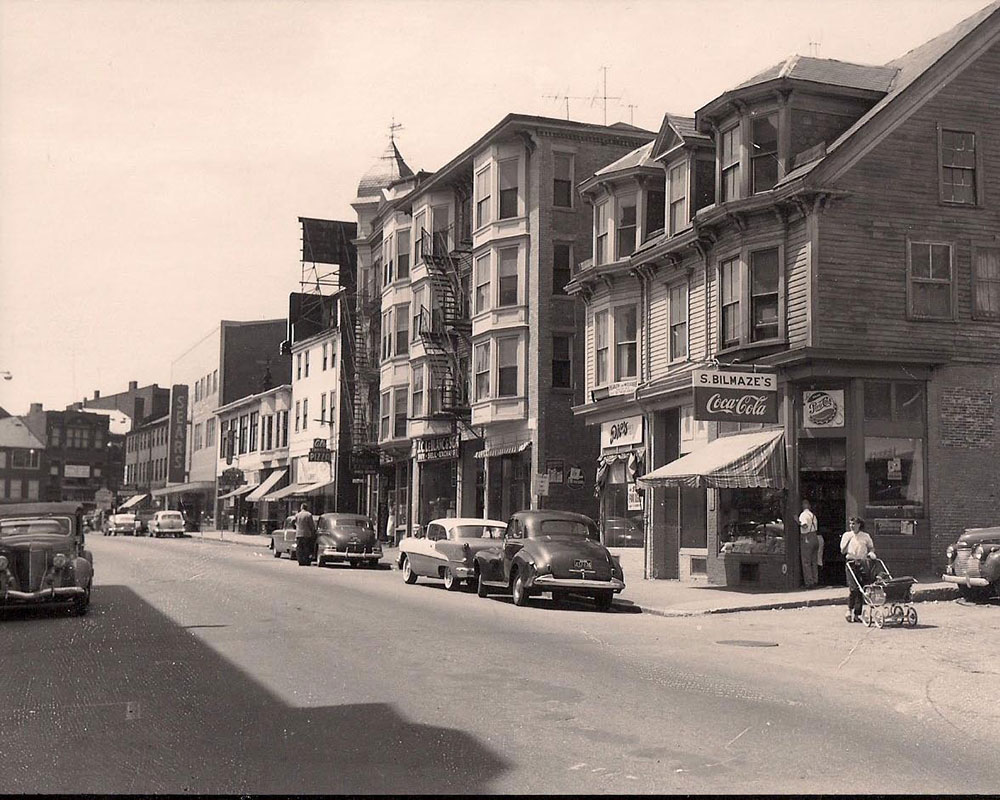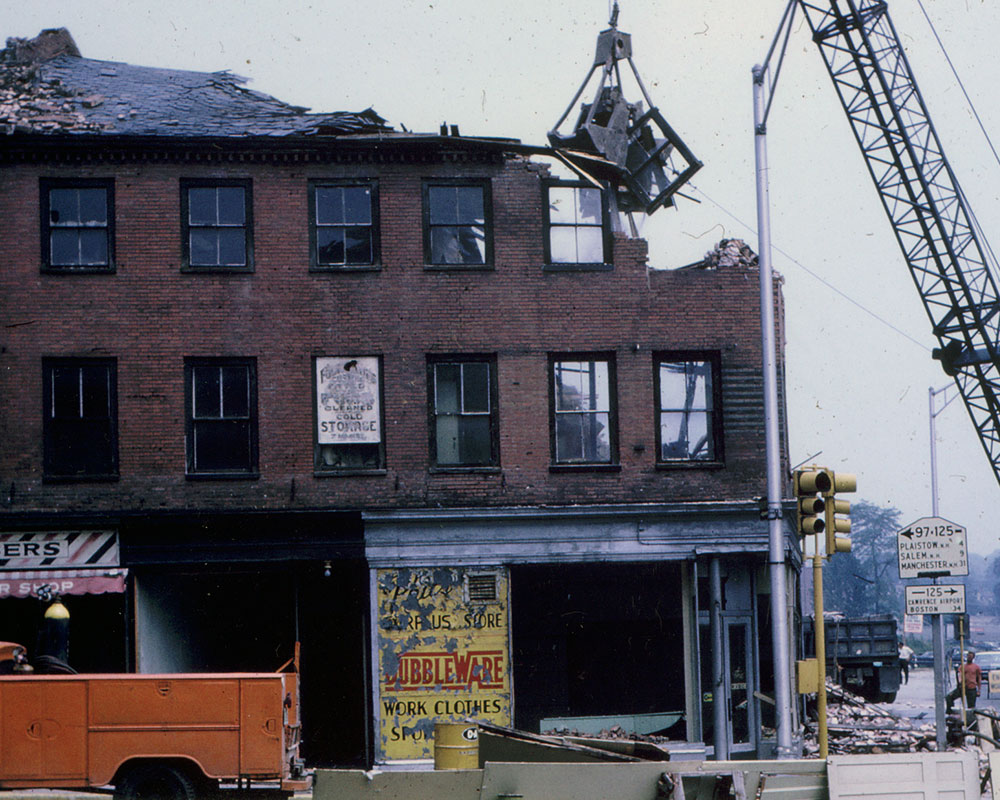(Additional photograph below.)
The area east of Main Street in Haverhill’s downtown was reduced almost 60 years ago from a huge retail shopping district to a difficult-to-navigate and “one of the lowest-income areas in the city” “cut off from the city’s many benefits.”
Now, Haverhill hopes to reverse, what it called, an “historic injustice” with a $452,000 federal planning grant aimed at, in city officials’ words, “Removing the Scars of Urban Renewal.”
“This grant will support improvements in Haverhill that will better connect all residents to an emerging downtown area, quality job opportunities, education, health care and other services throughout the city,” said Mayor Melinda E. Barrett in a statement. The grant comes from the U.S. Department of Transportation’s “Reconnecting Communities & Neighborhoods” program.
On Jan. 5, 1966, a Summer Street tenement was destroyed by a bulldozer in eight minutes as Haverhill kicked off its federally funded “Pentucket Urban Renewal Program.” By May of that year, 58 buildings would be razed, including Sears, Roebuck and Co. facing Water Street.
Nearly simultaneously, Interstate 495 was being constructed and the Haverhill Housing Authority—then the city’s de facto redevelopment agency—commissioned the building of the terminus of a planned connector between the downtown and the new highway. Bailey and Ginty Boulevards, dubbed “the road to nowhere” when the connector fell through, severed streets such as How and Pecker—with high concrete retaining walls—to the west and Green, Kent and School Streets to the east. The latter section, involving Ginty Boulevard, the city said in its grant proposal, is now a primary focus of fixes.
“Thus, the goal of this project is to ensure that those neighborhoods previously cut off from resources and benefits—such as education and workforce opportunities, health and emergency services and other neighborhoods within city limits—can properly enjoy the economic growth that will come from this development,” officials wrote.
Among the solutions the city’s plans to explore with its planning grant are “Alternative roadway designs or other uses of the right-of-way including green infrastructure or other nature-based solutions;” improving “Victorian era” water and stormwater systems, including combined sewer overflows into the Merrimack River; and improved transit, pedestrian and bicycle travel and charging for electric cars and e-bikes.
Haverhill promised the feds, “This planning project will be done in coordination with the large investment in Haverhill’s downtown to bring communities back together and provide adequate access for all residents.”
In its statement Thursday, the city said it “will work with residents, neighborhoods and businesses to launch a strategic, collaborative initiative to address infrastructure barriers created by 1960s and 70s-era ‘Urban Renewal’ efforts.
Transportation Secretary Pete Buttigieg laid out Washington’s grant premise, saying, “Transportation should never divide communities—its purpose is to connect people to jobs, schools, housing, groceries, family, places of worship and more. That’s what the Reconnecting Communities program and the Neighborhood Access and Equity program are designed to ensure.”
His office said requests “greatly outpaced the level of available funding” and turned down Newburyport’s $625,000 Hale Street Redesign Project” and the Merrimack Valley Planning Commission’s proposed $12 million “Futuros Tejidos: Connecting Greater Lawrence” proposal.

Water Street in downtown Haverhill before urban renewal. Sears Roebuck and Co. is at left. (Courtesy of the Trustees of the Haverhill Public Library, Special Collections Department.)

